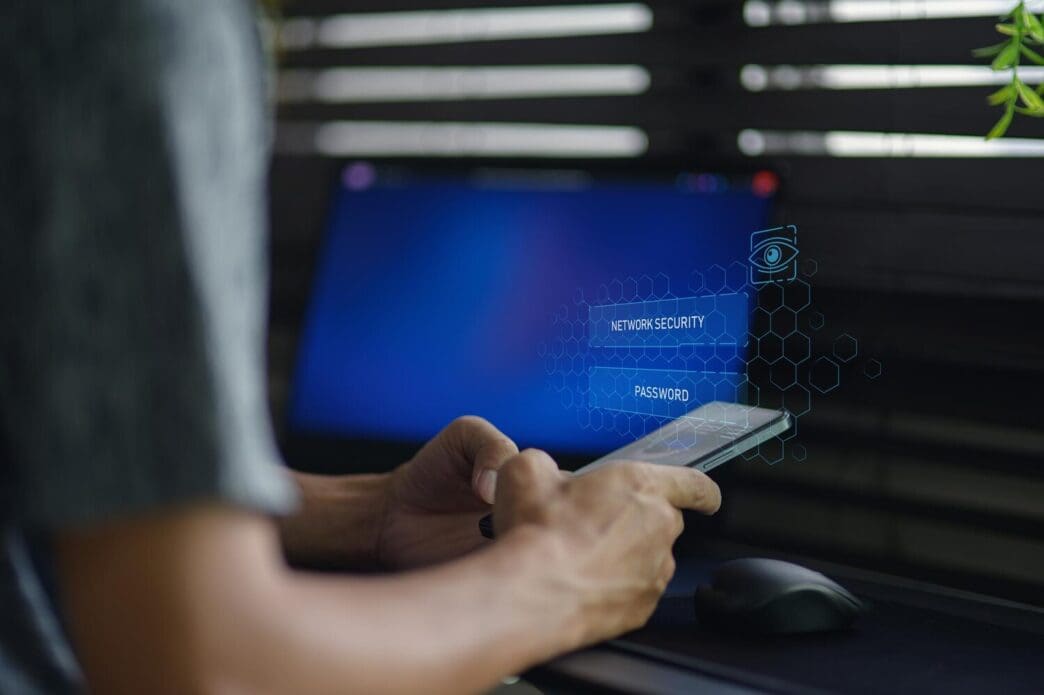Executive Summary
The Story So Far
Why This Matters
Who Thinks What?
Miami’s dynamic financial sector is rapidly embracing biometric authentication, integrating cutting-edge technologies like fingerprint scanning, facial recognition, and voice identification into banking operations to enhance security and streamline customer experiences. This significant technological shift, driven by the demand for greater convenience and stronger protection against fraud, prompts crucial questions for consumers about the ultimate safety and privacy of their most sensitive financial data as they navigate this evolving digital landscape.
The Rise of Biometrics in Banking
The global financial industry is undergoing a profound transformation, with biometrics emerging as a cornerstone of modern security protocols. This shift is particularly evident in tech-forward cities like Miami, a burgeoning FinTech hub where innovation is readily adopted. Banks are increasingly moving beyond traditional passwords and PINs, which are vulnerable to theft and forgetting, towards unique biological markers that promise both convenience and a higher level of security.
This embrace of biometrics is fueled by several factors. Firstly, it offers unparalleled convenience, allowing customers to access accounts or authorize transactions with a simple touch or glance, eliminating the friction associated with remembering complex credentials. Secondly, it significantly enhances security, making it far more challenging for unauthorized individuals to gain access. Lastly, it plays a critical role in reducing fraud, a persistent and costly challenge for financial institutions worldwide.
Miami, with its vibrant international population and strong emphasis on digital innovation, is a natural testing ground for these advancements. Local banks are at the forefront, implementing various forms of biometric authentication, from the ubiquitous fingerprint scanners on mobile devices to more sophisticated facial and voice recognition systems at ATMs and for online banking.
How Biometric Authentication Works
Understanding the mechanics of biometric authentication is key to appreciating its strengths and potential vulnerabilities. The process generally involves two main stages: enrollment and verification.
During enrollment, a user’s unique biological trait—be it a fingerprint, face, or voice—is scanned and converted into a mathematical representation, often called a “template.” It is crucial to note that banks typically do not store the raw biometric data (e.g., an actual image of your face or fingerprint). Instead, they store this encrypted, irreversible template. This template is a series of numbers and data points that represent the unique features of the biometric input.
When a user attempts to verify their identity, a live scan of their biometric trait is taken. This new scan is then converted into a template and compared against the stored template. If the two templates match within an acceptable margin of error, authentication is successful, granting the user access. This comparison process is designed to be extremely fast and secure, leveraging advanced algorithms to minimize both false positives and false negatives.
The Security Promise: Strengths of Biometrics
The primary appeal of biometric authentication lies in its inherent security advantages over traditional methods. By leveraging unique biological characteristics, banks aim to create a more robust defense against a wide array of cyber threats.
Enhanced Security Against Traditional Threats
Biometrics significantly diminish the risks associated with stolen or weak passwords. Unlike a password, which can be guessed, phished, or brute-forced, a fingerprint or facial scan is far more difficult to compromise. This inherent uniqueness reduces the attack surface for common cyber threats, making unauthorized access much harder for malicious actors.
Furthermore, biometrics are intrinsically linked to the individual, making them difficult to share or transfer inadvertently. This contrasts sharply with physical cards or PINs, which can be lost, stolen, or copied. Integrating biometrics often means that even if a device is stolen, the thief cannot access financial applications without the user’s live biometric input, adding a crucial layer of protection.
Reduced Fraud and Identity Theft
The unique nature of biological markers makes them a powerful tool in the fight against fraud and identity theft. It is exceedingly difficult for a criminal to replicate a live fingerprint, an accurate facial scan, or a specific voice pattern with sufficient precision to fool sophisticated biometric systems. This makes identity spoofing a significantly more complex challenge than simply stealing credentials.
Many modern biometric systems incorporate “liveness detection,” which can distinguish between a live human and a static image, video, or prosthetic. This technology is vital in preventing fraudsters from using photographs or recordings to bypass authentication. By continually evolving these detection methods, banks aim to stay ahead of increasingly sophisticated fraud attempts, providing real-time verification that an authorized, living individual is attempting access.
The Privacy and Security Concerns: Potential Pitfalls
While biometrics offer compelling security benefits, their adoption also introduces a new set of complex challenges concerning data privacy and potential security vulnerabilities that consumers and institutions must carefully consider.
Data Storage and Breach Risks
The most significant concern revolves around what happens if biometric templates are compromised. Unlike a password, which can be changed after a breach, your biometrics are immutable. If a database containing biometric templates were breached, those unique identifiers could potentially be exposed forever. While most banks store encrypted templates rather than raw data, the risk remains that sophisticated attackers could reverse-engineer these templates or use them in other ways. Centralized databases, even those highly secured, always present an attractive target for cybercriminals, raising the stakes for data protection.
Vulnerability to Spoofing and Liveness Detection
Despite advancements, biometric systems are not entirely impervious to spoofing. Researchers have demonstrated the ability to bypass some systems using high-quality prosthetic fingers, sophisticated masks, or deepfake technology. The effectiveness of liveness detection—the ability of a system to confirm that the biometric input is coming from a living person—is paramount. If liveness detection fails, it could allow fraudsters to impersonate users. Banks must continuously update and refine their liveness detection capabilities to counter evolving spoofing techniques, which require significant investment and expertise.
Privacy Implications and Consent
The collection and storage of biometric data touch upon deeply personal information, raising significant privacy implications. Users are essentially entrusting a part of their unique biological identity to financial institutions. This necessitates clear policies regarding data collection, storage, use, and retention. Regulations such as the General Data Protection Regulation (GDPR) in Europe, the California Consumer Privacy Act (CCPA), and Illinois’ Biometric Information Privacy Act (BIPA) are attempting to address these concerns by mandating strict consent requirements and data protection standards. Consumers must be fully informed about how their biometric data will be used and have clear options for consent or refusal.
Bias and Accuracy Issues
Another emerging concern is the potential for bias within biometric systems. Facial recognition algorithms, for instance, have sometimes shown higher error rates for certain demographic groups, particularly women and people of color. This can lead to issues of inequitable access or false rejections for legitimate users. Banks must ensure that their chosen biometric technologies are thoroughly tested for accuracy across diverse populations to prevent discrimination and ensure reliable access for all customers. Over-reliance on systems with inherent biases could lead to significant customer service and ethical challenges.
Regulatory Landscape and Industry Standards
As biometric authentication becomes more prevalent, the regulatory landscape is working to catch up, creating a framework to govern its use and protect consumer data. While a single, overarching federal law specifically for biometric data in banking is still developing in the U.S., various existing and emerging regulations provide guidance.
Financial institutions are typically subject to laws like the Gramm-Leach-Bliley Act (GLBA), which mandates the protection of consumer financial information. State-level privacy laws, such as BIPA, are particularly relevant, requiring explicit consent for biometric data collection and outlining strict data handling protocols. Internationally, GDPR sets a high bar for data privacy, influencing global banking practices.
Industry standards, often developed by organizations like the National Institute of Standards and Technology (NIST) and the FIDO Alliance, play a crucial role in establishing best practices for biometric system design, implementation, and security. These standards help ensure interoperability and a baseline level of security across different vendors and platforms. Banks adopting biometrics are expected to adhere to these standards, not only for compliance but also to build and maintain customer trust.
Navigating the Biometric Future: Advice for Consumers
As Miami banks increasingly integrate biometric authentication, consumers have a critical role to play in protecting their financial data and understanding the implications of these technologies. Informed decision-making and proactive measures are essential.
Understand Your Bank’s Policies
Before opting into biometric authentication, thoroughly review your bank’s privacy policy and terms of service regarding biometric data. Understand precisely how your data is collected, stored, encrypted, and used. Inquire about their data retention policies and whether you have the option to revoke consent or delete your biometric template if you choose. Transparency from your financial institution is paramount, and you should not hesitate to ask direct questions about their security protocols.
Enable Multi-Factor Authentication (MFA)
Biometrics should ideally be one factor in a multi-factor authentication strategy, not the sole means of access. Many banks offer MFA that combines something you are (biometric) with something you know (a PIN or password) or something you have (a one-time code sent to your phone). Enabling MFA significantly enhances security, as a breach of one factor will not grant access without the others. This layered approach is the gold standard for digital security.
Stay Informed and Vigilant
The landscape of FinTech and cybersecurity is constantly evolving. Stay informed about new threats, security updates from your bank, and best practices for protecting your digital identity. Regularly monitor your bank statements and transaction history for any suspicious activity. If you notice anything unusual, report it to your bank immediately. Vigilance is your first line of defense against potential fraud.
Consider the Trade-offs
Ultimately, deciding to use biometric authentication involves weighing the convenience against the potential risks. For many, the ease of access and enhanced security against common threats outweigh the theoretical risks of a biometric template breach. However, each individual must assess their own comfort level with sharing such sensitive personal data. If you are uncomfortable, ensure your bank provides alternative, secure authentication methods, and do not feel pressured to opt-in.
The Future of Biometric Banking in Miami and Beyond
The integration of biometric authentication in Miami’s banking sector is just the beginning of a larger trend. Future innovations are likely to include more sophisticated behavioral biometrics, which analyze unique patterns in how users interact with their devices (e.g., typing rhythm, mouse movements), and advanced physiological biometrics like vein pattern recognition. These technologies promise even greater security and a more seamless user experience.
As open banking initiatives gain traction and digital identities become more integrated across various platforms, biometrics will play an increasingly central role in creating a unified, secure, and convenient financial ecosystem. The ongoing challenge for financial institutions, regulators, and consumers alike will be to continuously balance the pursuit of cutting-edge security and unparalleled convenience with the fundamental imperative of safeguarding individual privacy and data integrity.
Miami’s embrace of biometric authentication marks a significant leap forward in digital banking, promising enhanced security and unparalleled convenience for consumers. While these technologies offer robust protection against many traditional threats, they also introduce novel privacy and security considerations related to data storage and potential vulnerabilities. As the financial landscape continues to evolve, a clear understanding of these systems, coupled with proactive security measures and regulatory oversight, will be essential for both banks and consumers to safely navigate the future of digital finance.







